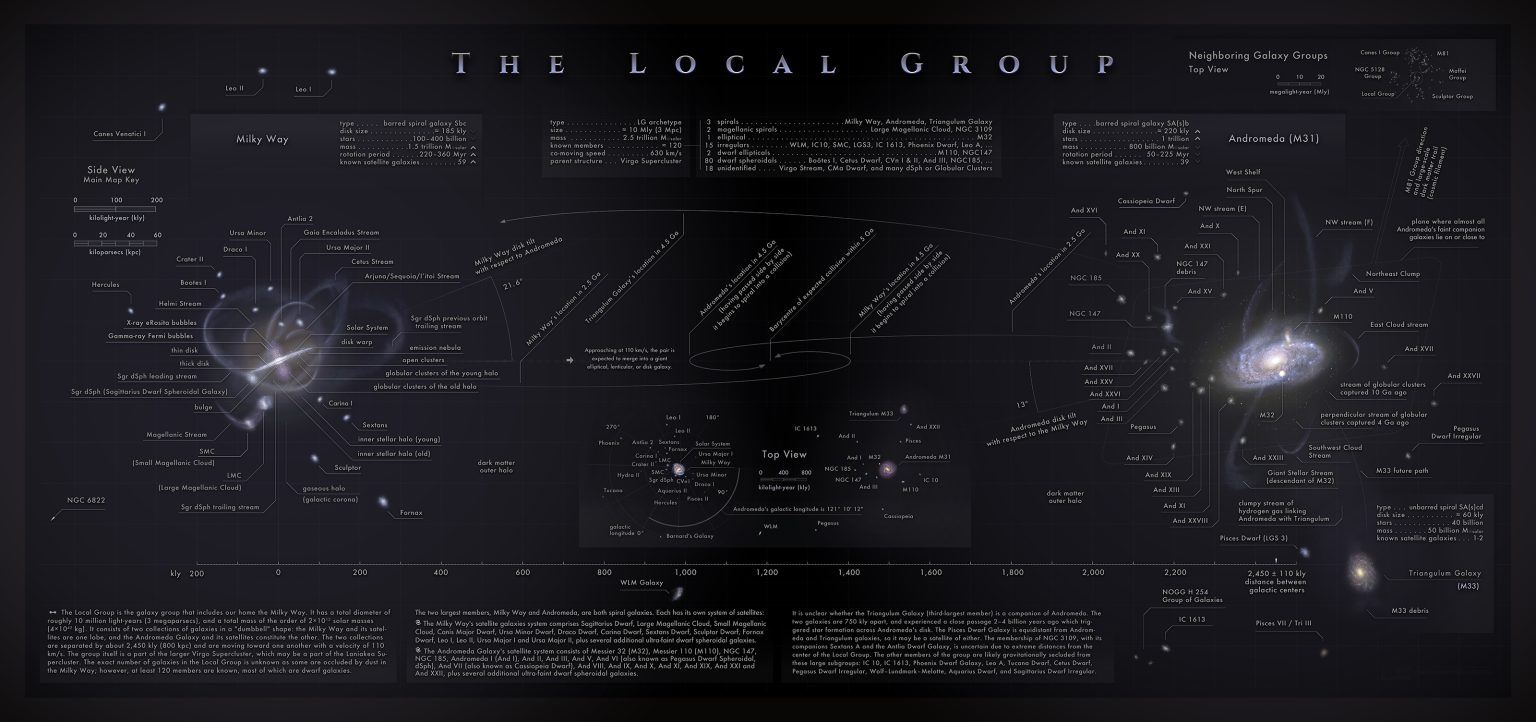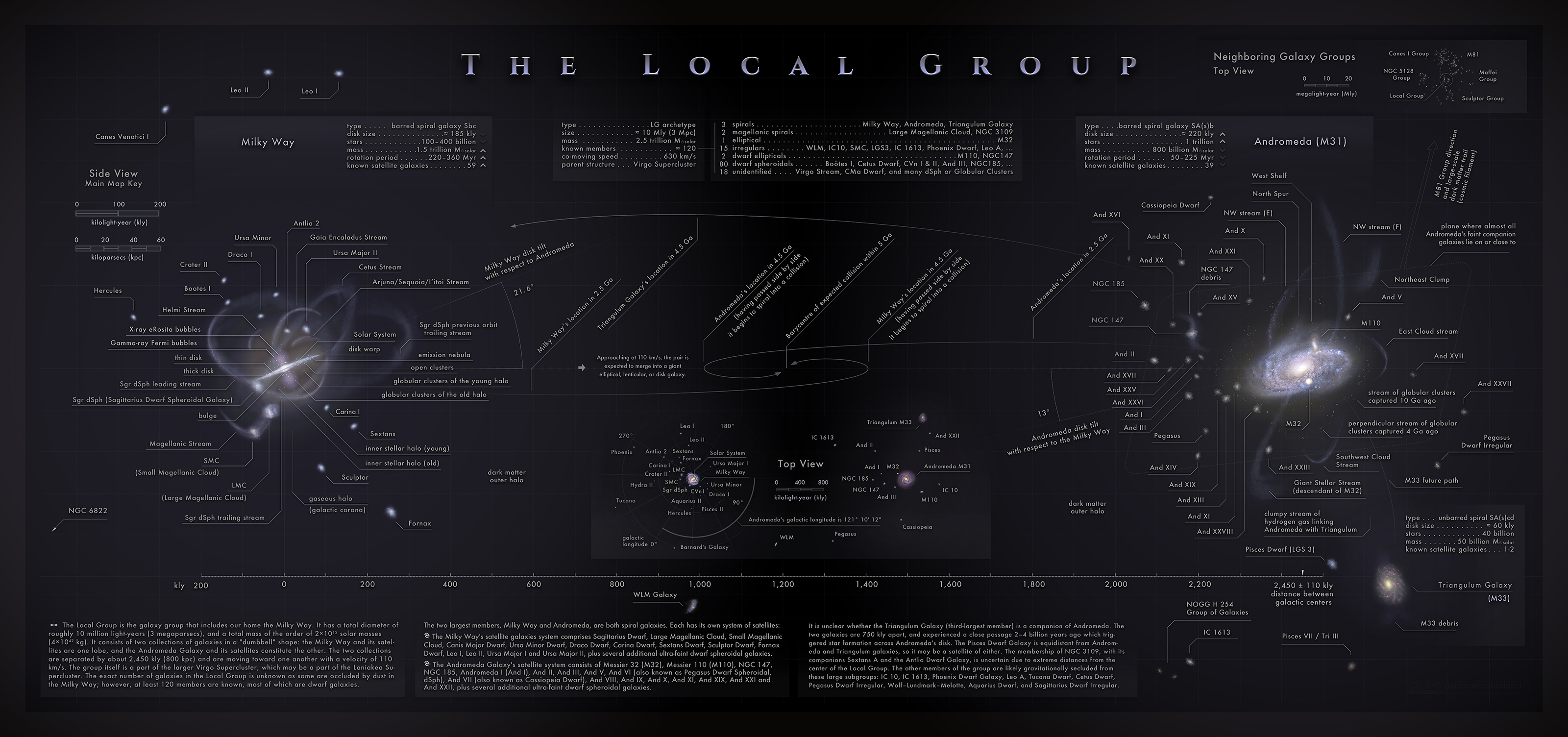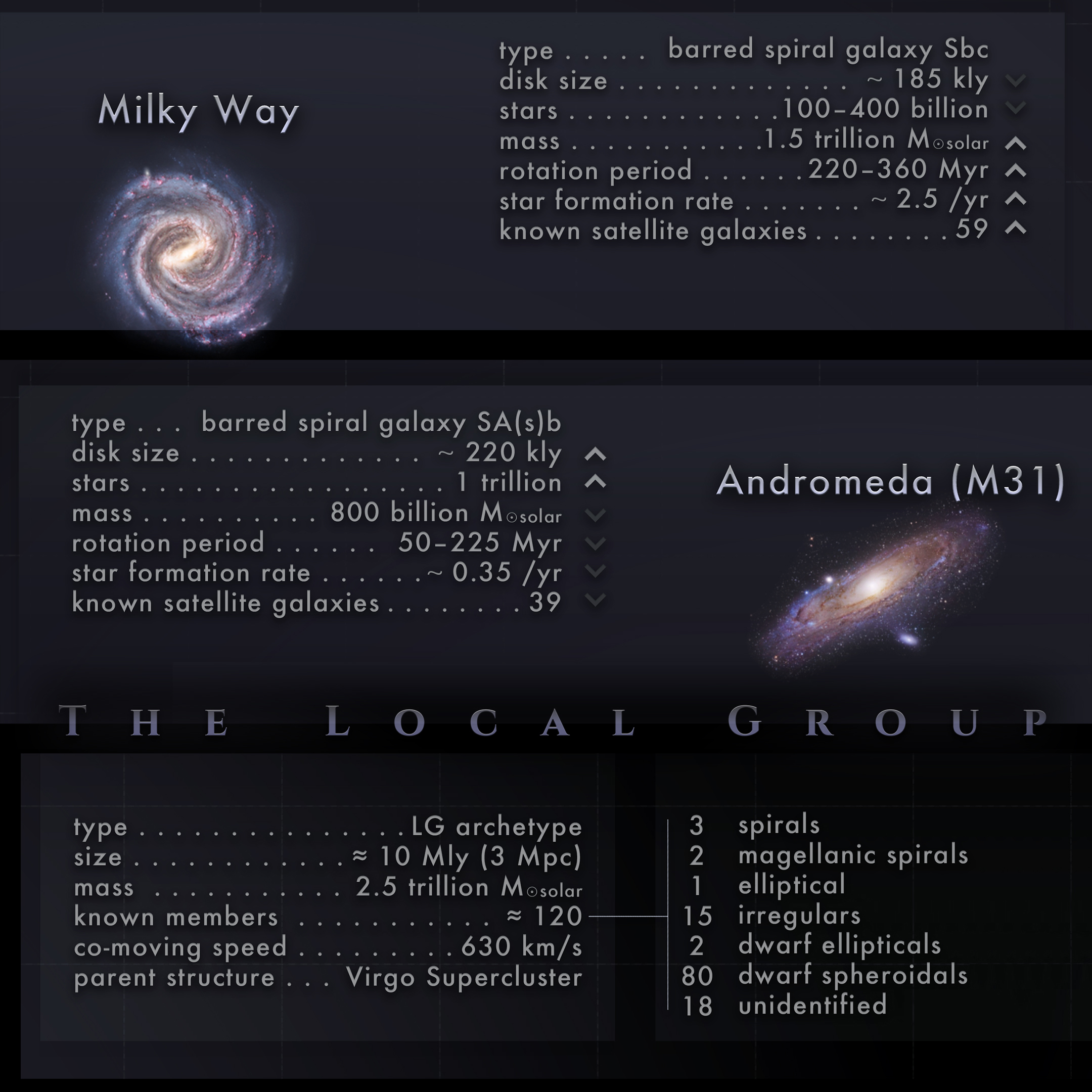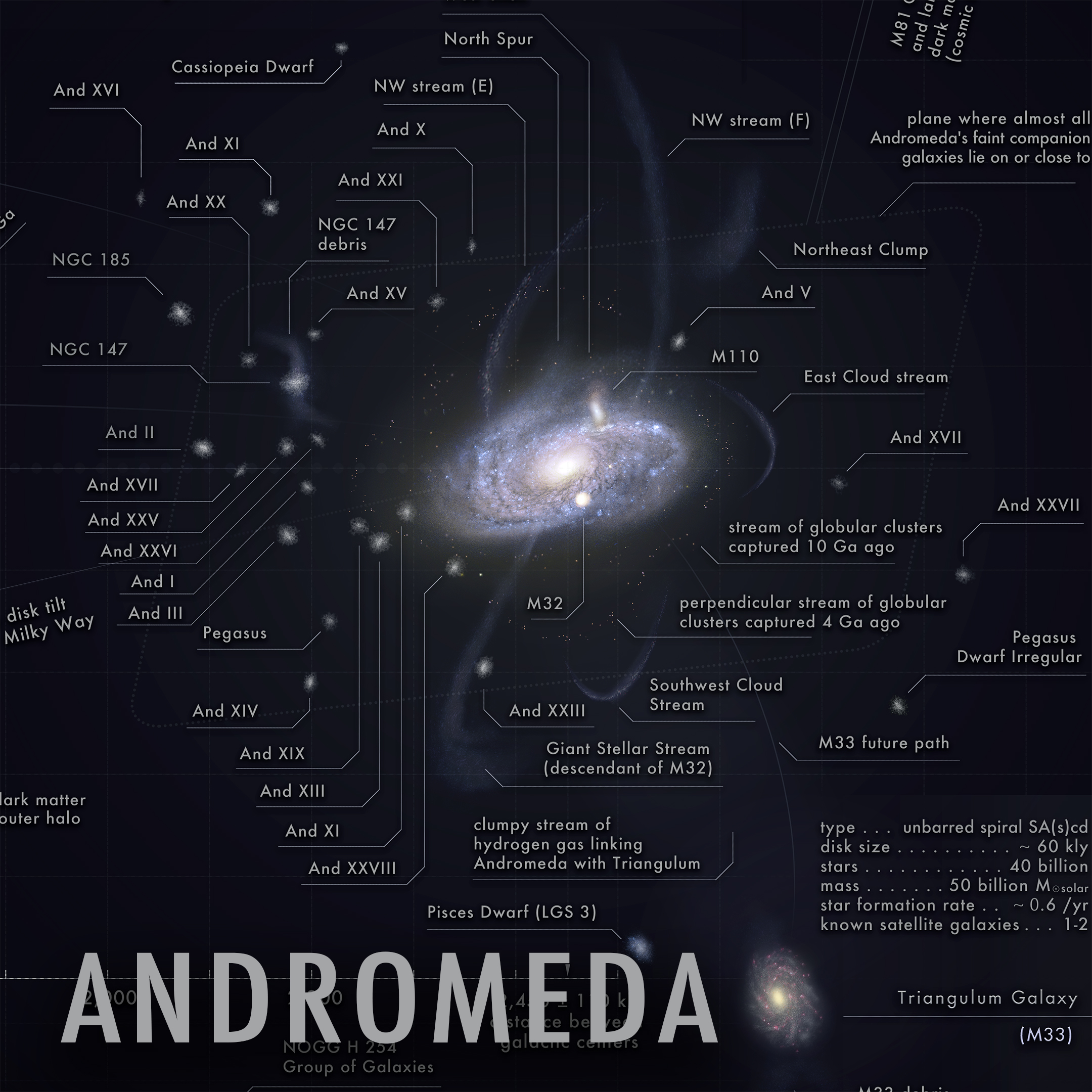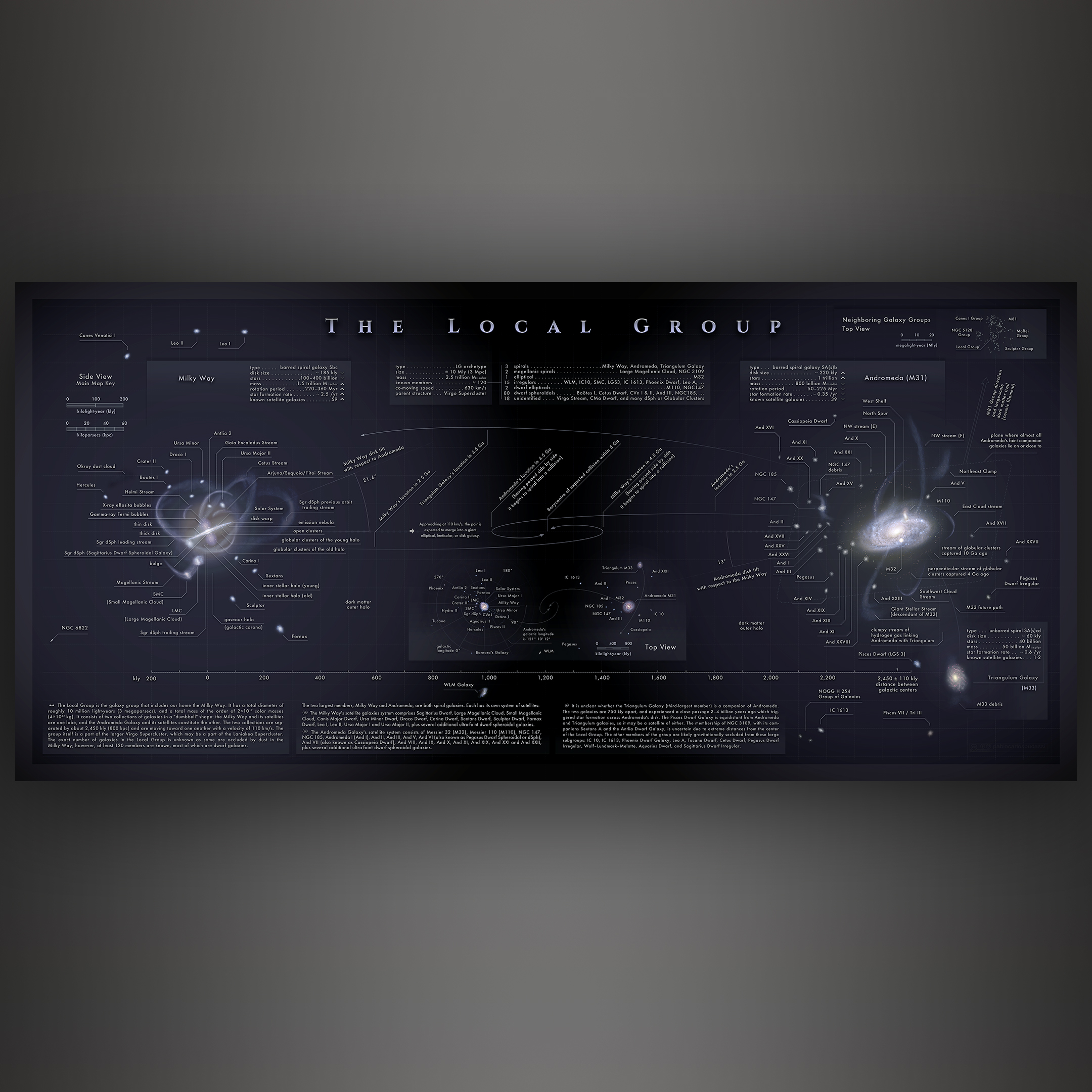VERY DETAILED SIDE VIEW OF “THE LOCAL GROUP” OF GALAXIES
A detailed lateral view of the Local Group of galaxies that contains the Milky Way, Andromeda, and other 120 minor galaxies. Expected future paths for major group members are denoted with arrows. The main map is accompanied by technical sheets for major galaxies, a top view, and a neighboring groups scheme.
The Andromeda Galaxy’s satellite system consists of Messier 32 (M32), Messier 110 (M110), NGC 147, NGC 185, Andromeda I (And I), And II, And III, And V, And VI (also known as Pegasus Dwarf Spheroidal or dSph), And VII (also known as Cassiopeia Dwarf), And VIII, And IX, And X, And XI, And XIX, And XXI and And XXII, plus several additional ultra-faint dwarf spheroidal galaxies.
It is unclear whether the Triangulum Galaxy (third-largest member) is a companion of Andromeda. The two galaxies are 750 kly apart, and experienced a close passage 2–4 billion years ago which triggered star formation across Andromeda’s disk. The Pisces Dwarf Galaxy is equidistant from Andromeda and Triangulum galaxies, so it may be a satellite of either. The membership of NGC 3109, with its companions Sextans A and the Antlia Dwarf Galaxy, is uncertain due to extreme distances from the center of the Local Group. The other members of the group are likely gravitationally secluded from these large subgroups.
Related works:
Panoramic Zoom Series
Local Sheet – Council of Giants – Local Group – Milky Way – Orion Spur

A wide-angle panoramic view of our cosmic address—perfect for your classroom or studio.

Detailed diagram showing objects between the Earth and the Moon including artificial satellites, relevant sized near-Earth passing asteroids (past and future), and the different distances the Moon can take from Earth.
“The Local Group”
Buy Poster Quality metal plate
Prints and other Products HD Download

